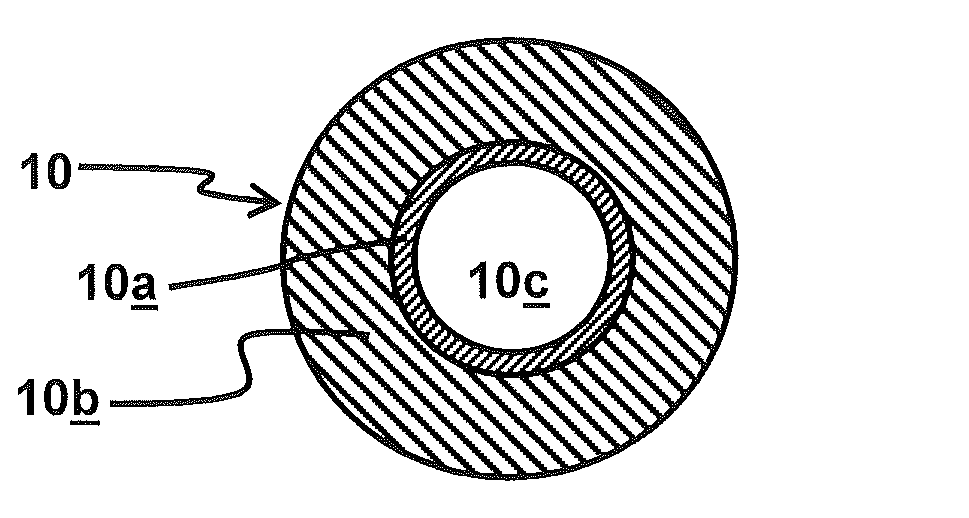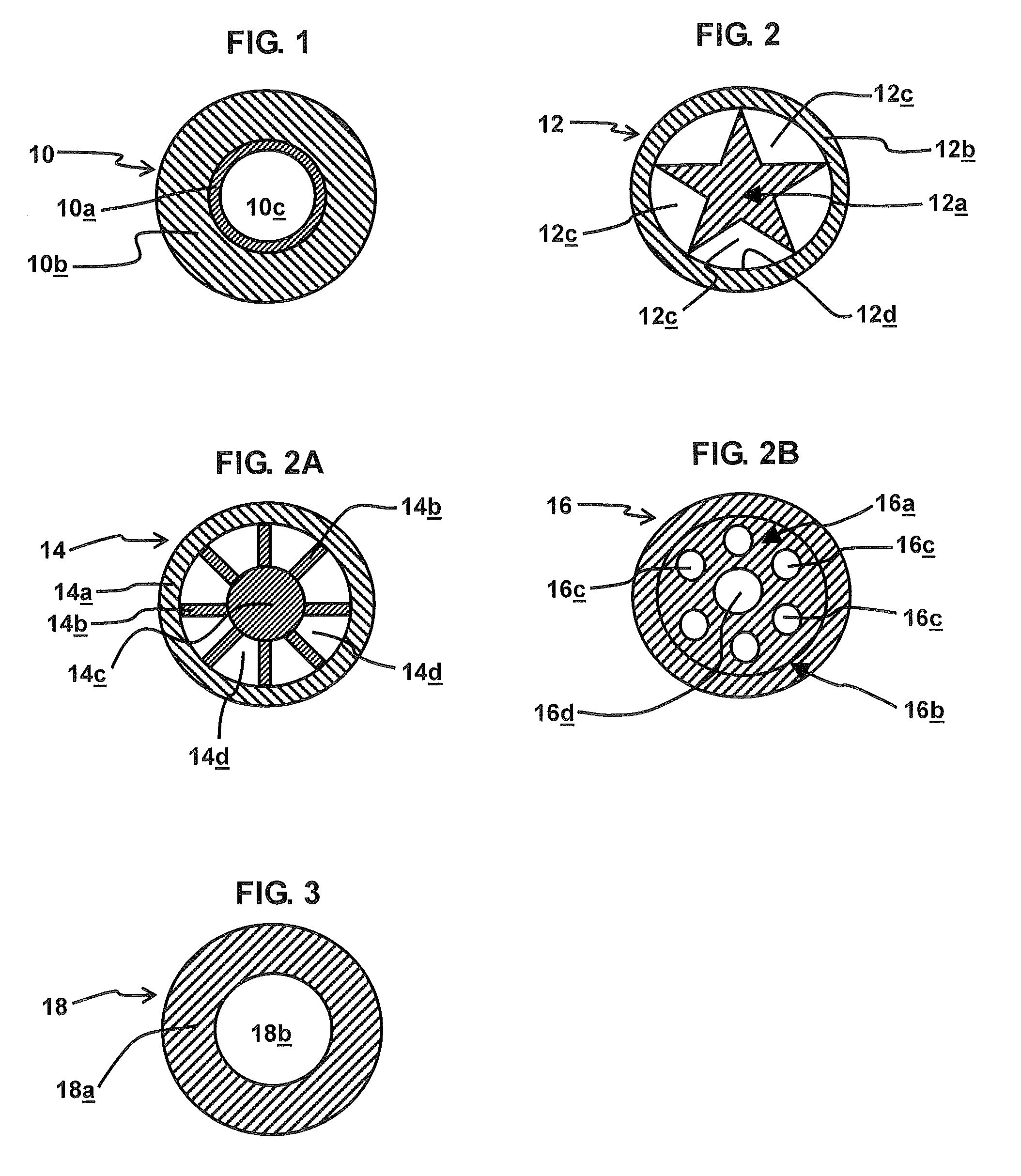Tubular signal transmission device and method of manufacture
a technology of initiation signal and transmission device, which is applied in the direction of weapons, fireworks, weapons types, etc., can solve the problems of unresolved variations of reaction pressure, propagation failure, and migration of unresolved reactive materials, and achieve the effect of high surface area configuration
- Summary
- Abstract
- Description
- Claims
- Application Information
AI Technical Summary
Benefits of technology
Problems solved by technology
Method used
Image
Examples
Embodiment Construction
[0024]A signal transmission tube as described herein comprises, instead of pulverulent reactive material, a reactive polymeric material. In some embodiments, the signal transmission tube comprises a confinement tube within which the reactive polymeric material is disposed as a rod within the confinement tube or as a layer of a coating composition (e.g., a paint) on the interior surface of the tube. In such embodiments, the confinement tube is preferably made of a non-reactive material or materials, such as the single- or multiple-ply hollow polyethylene and / or SURLYN® tubes conventionally used in shock tubes.
[0025]Reactive polymeric materials are polymeric materials that have reactive pendant groups such as azido groups, nitrate groups, triazoline groups and / or triazole groups chemically bonded to the polymer backbone, rather than comprising a relatively inert polymeric material or resin having pulverulent reactive material physically blended therein. However, a reactive polymeric m...
PUM
| Property | Measurement | Unit |
|---|---|---|
| interior diameter | aaaaa | aaaaa |
| velocity | aaaaa | aaaaa |
| weight | aaaaa | aaaaa |
Abstract
Description
Claims
Application Information
 Login to View More
Login to View More - R&D
- Intellectual Property
- Life Sciences
- Materials
- Tech Scout
- Unparalleled Data Quality
- Higher Quality Content
- 60% Fewer Hallucinations
Browse by: Latest US Patents, China's latest patents, Technical Efficacy Thesaurus, Application Domain, Technology Topic, Popular Technical Reports.
© 2025 PatSnap. All rights reserved.Legal|Privacy policy|Modern Slavery Act Transparency Statement|Sitemap|About US| Contact US: help@patsnap.com


